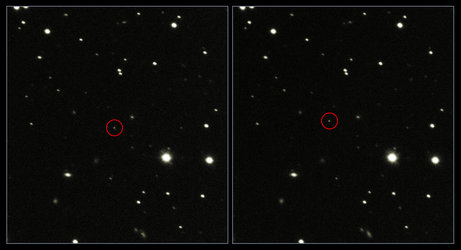
Measuring the acceleration of the Solar System with Gaia
Astronomers have measured the acceleration of the Solar System around the centre of the galaxy using data from Gaia’s Early Data Release 3 (Gaia EDR3), which was made public on 3 December 2020.
The velocity of the Solar System has been measured to change by 0.23 nm/s every second. Due to this tiny acceleration, the trajectory of the Solar System is deflected by the diameter of an atom every second. In a year this adds up to around 115 km. The acceleration measured by Gaia shows a good agreement with the theoretical expectations and provides the first measurement of the curvature of the Solar System’s orbit around the galaxy in the history of optical astronomy.
The measurement was made by looking for minuscule changes in the positions of distant galaxies, called quasi stellar objects (QSOs), caused by the movement of our Solar System. The apparent changes in position is called aberration. Discovered by James Bradley, England’s Astronomer Royal, in 1727, aberration causes the positions of celestial objects to appear to move in the direction of the observer. In this case, the aberration caused by Gaia's orbit around the Sun was removed from the data. This left the aberration caused by the motion of the Solar System around the centre of the galaxy.
The animation shows the systematic movement of 3000 simulated QSOs that would be induced by the Solar System’s measured acceleration. The video starts by showing the positions of the simulated QSOs. Then, it superimposes the ‘proper motion vectors’, which shows the direction and magnitude of the apparent QSO movements induced by the actual motion of the Solar System. Finally, the QSOs appear to move in the direction of the acceleration, which is close to the Galactic centre, but with highly exaggerated motion to make the effect visible.






